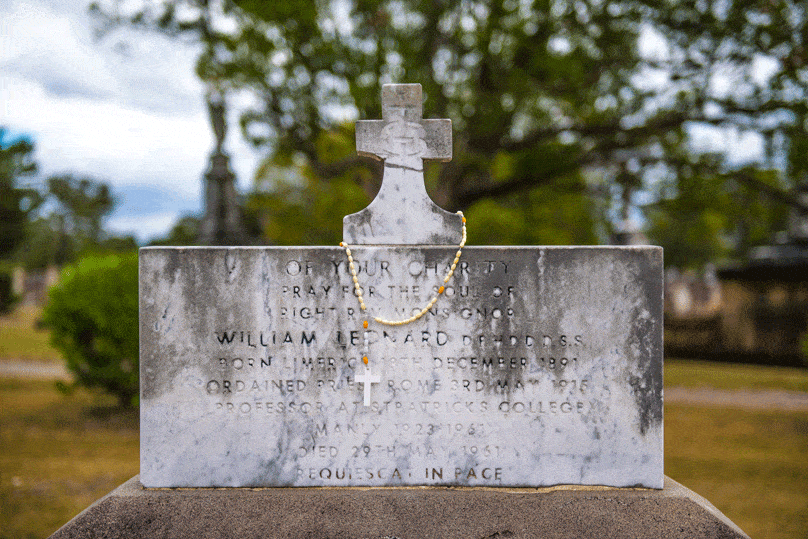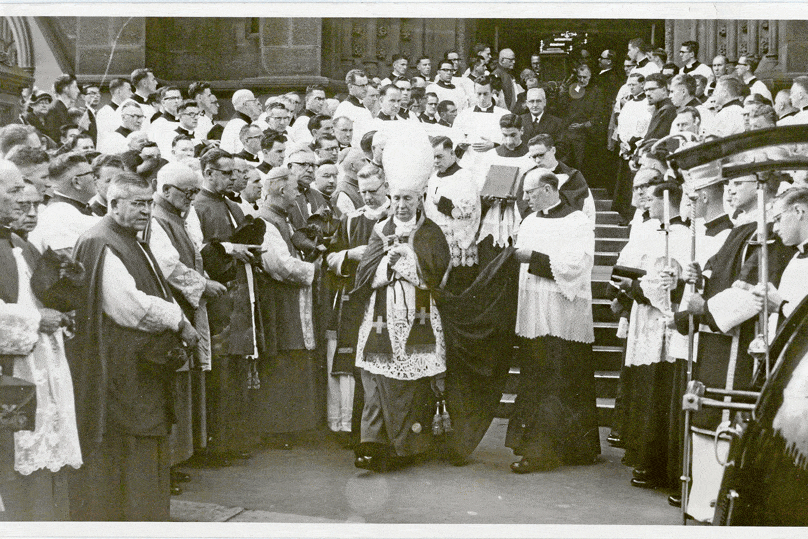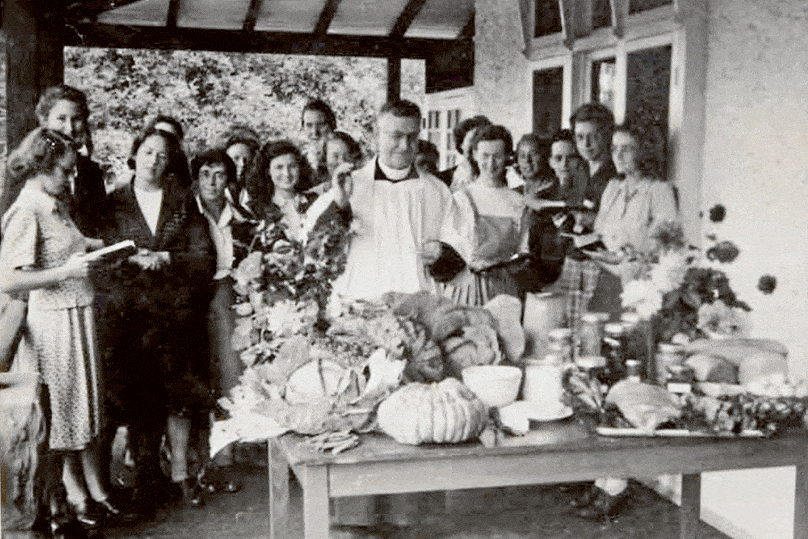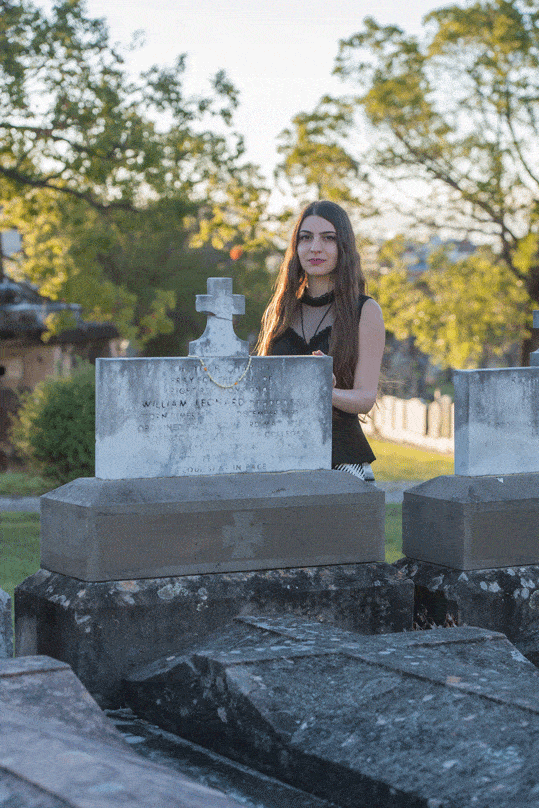 In June 1961, a casket was carried down the steps of St Mary’s Cathedral. Cardinal Gilroy, with miter and crosier, led the funeral procession. The casket carried one of Australia’s great Biblical scholars, Rev. Dr William Leonard, a theologian, academic, priest and mystic who taught at St Patrick’s Seminary, Manly. As the decades passed, the story of Dr Leonard, became from legend, to memory, to being almost forgotten.
In June 1961, a casket was carried down the steps of St Mary’s Cathedral. Cardinal Gilroy, with miter and crosier, led the funeral procession. The casket carried one of Australia’s great Biblical scholars, Rev. Dr William Leonard, a theologian, academic, priest and mystic who taught at St Patrick’s Seminary, Manly. As the decades passed, the story of Dr Leonard, became from legend, to memory, to being almost forgotten.
Not only was Dr Leonard a wielder of masterly knowledge of Scripture, a great writer and a multi-lingual Biblical scholar, he was also described by many as a mystic. Although he suffered from a kind of paralysis that rendered him speechless and immobile, Fr Leonard maintained an extraordinary devotion to the Holy Mass. Dr Leonard would celebrate Mass at 4am and would attend up to four Masses a day.
This mystical experience emanating from his Masses was very much etched in the memory of John Leonard – his cousin from Corbally, who attended his 6am Masses at the Leonard family homestead at Ballycraheen, Ireland. “Dr Leonard became immobile – went into a trance-like mode and looked to be in pain,” describes John Leonard, “it was perceived that he was suffering Christ’s passion on Calvary”.
His apprehension of the divine was mostly apparent on Fridays. Australian historian, Fr Edmund Campion SJ, notes that each Friday brought him to share in the Passion of Christ. On other weekdays, priests who entered the Manly chapel noticed Dr Leonard in a corner behind the door, totally engrossed in another world. He was wrapped up in God.

It is only fitting that we revive Dr Leonard’s extraordinary story. Born in Ballycraheen, Ballysimon, in County Limerick, Ireland, on 18 December 1891, Dr Leonard was the eldest of six. Ordained for the Diocese of Limerick in 1915, he went on to complete two doctorates in Divinity and Philosophy in Rome. In 1923, he made his way to Sydney to teach at St Patrick’s Seminary, Manly.
Dr Leonard later embarked on a journey to the Pontifical Biblical Institute, Rome, to gain the very rare distinction of a Doctorate in Sacred Scripture (D.S.S). Upon returning to Sydney in January 1939, Fr Leonard served as Professor in the Faculty of Theology, Archeology and Hebrew at St Patrick’s College, Manly. In 1961, he died at Lewisham Hospital following a heart attack.
His brother, Fr Timothy Leonard, was a Columbian missionary who suffered a cruel death at the hands of the Communists in China in 1929 while celebrating Mass. When another priest warned Fr Timothy Leonard of the peril that awaited him in China, Fr Timothy responded, “what is it but a bad quarter of an hour – think of the reward”.
When the news of his brother’s death reached Australia, it was said that Dr Leonard stood in front of the altar of the Irish Saints at St. Mary’s Cathedral, eyes filled with tears but a warm smile etched on his face. “Rejoice with me, John,” said Dr Leonard to his colleague, “we have a martyr in the family”. Dr Leonard immediately wrote to his mother in Ireland, saying “Congratulations Mam, you have become the mother of a martyr”.

Leonard was also a great friend of the Maronites – attending an annual Mass in 1961 at St Maroun’s Church, Redfern, with more than 2,000 in attendance. In that ceremony, Bishop Muldoon said that Maronite and Irish people were very similar, in that both suffered for their faith but had treasured it; “it is only in the crucible of suffering that is formed the spirit of steel that is strong to resist in the hour of trial,” said Bishop Muldoon.
Today, we are called to give our life for Christ. In the modern West, the persecution of the Church is no longer visible in the blood of martyrs, but rather, we dwell in a society that uses the ostensive power of the State to curtail religious freedoms and liberty, with the Left aggressively seeking to shun religion from the public sphere.
Dr Leonard also had a great devotion to the Sacred Heart of Jesus. In his 1948 Catholic Weekly publication, ‘A synthesis of devotion to the Sacred Heart’, Leonard states, “the cross is hard, but all the same it is the only source of a peace and joy which nothing can take away.”

In all his excellence and wisdom, Dr Leonard was an immensely humble man. His former student from Manly, Father David Coffey, now 83, sharply recalls that his memory of Leonard was that “he was a very kind, good man, simple but brilliant. He lived in another world, different to the one we live in.”
Last November, my mother and I were walking through Rookwood cemetery and praying for the Holy Souls, and passing the statue of St Michael the Archangel to the graves of priests – one grave stood out, a beautiful plant was growing next to it: the grave of Dr William Leonard. Weeks later, our parish priest mentioned to us that Dr Leonard was a holy man, a mystic, and with this, I started a quest, unearthing all I could on Dr Leonard.
I started interviewing elderly priests, researching archives and newsletters from Ireland, and when I interviewed Fr Coffey, he remarked that just that week, he, completely unrelatedly, was pondering upon the literary works of Dr Leonard. Fr Coffey remarked, “I think a few strings must have been pulled up in heaven.”
Georgette Bechara is studying Commerce/Law at the University of Sydney. Georgette regularly writes for uCatholic and ChurchPop and aspires to be a voice for the many persecuted Christians in a world that is often so hostile towards people of faith.
